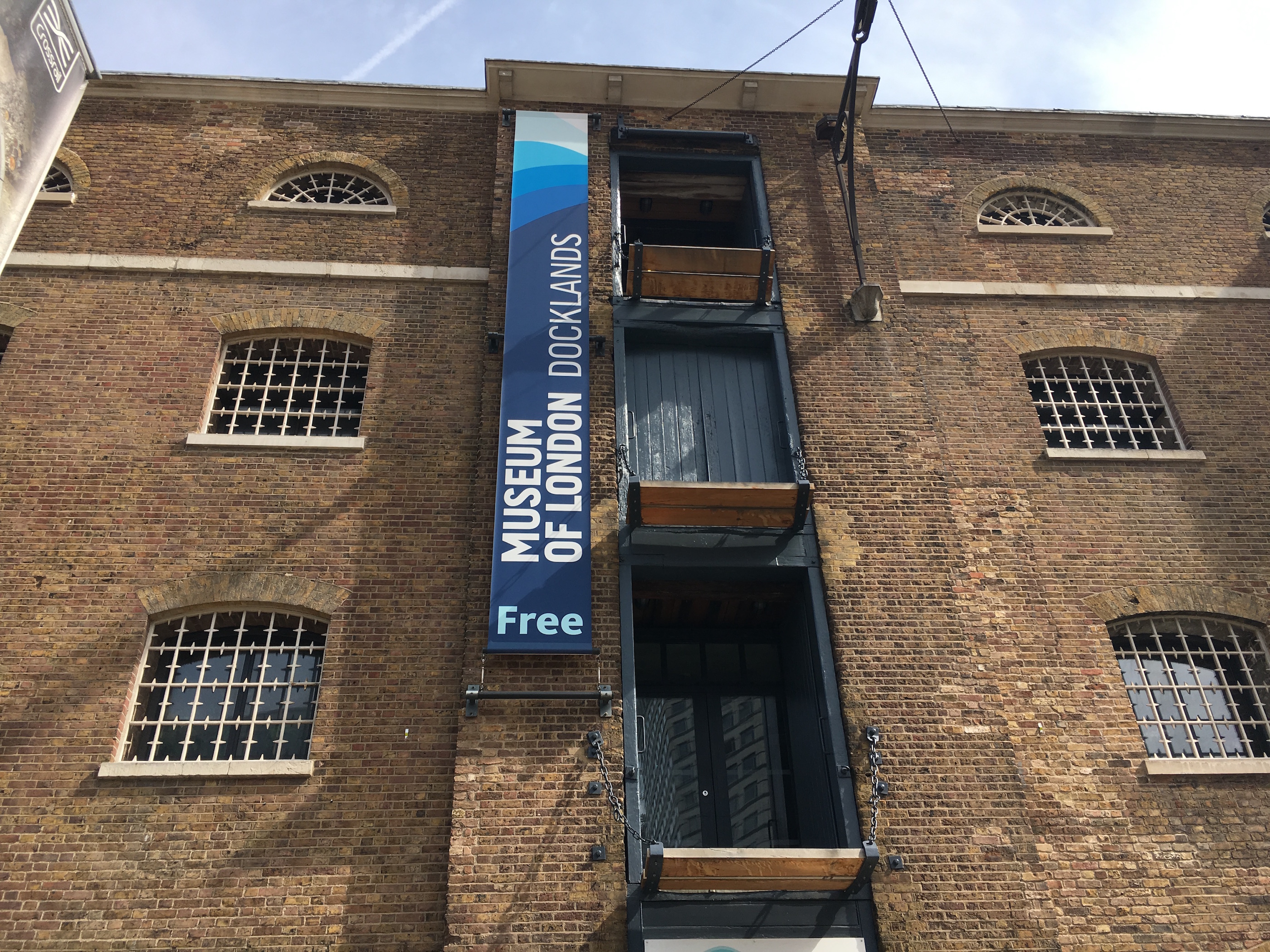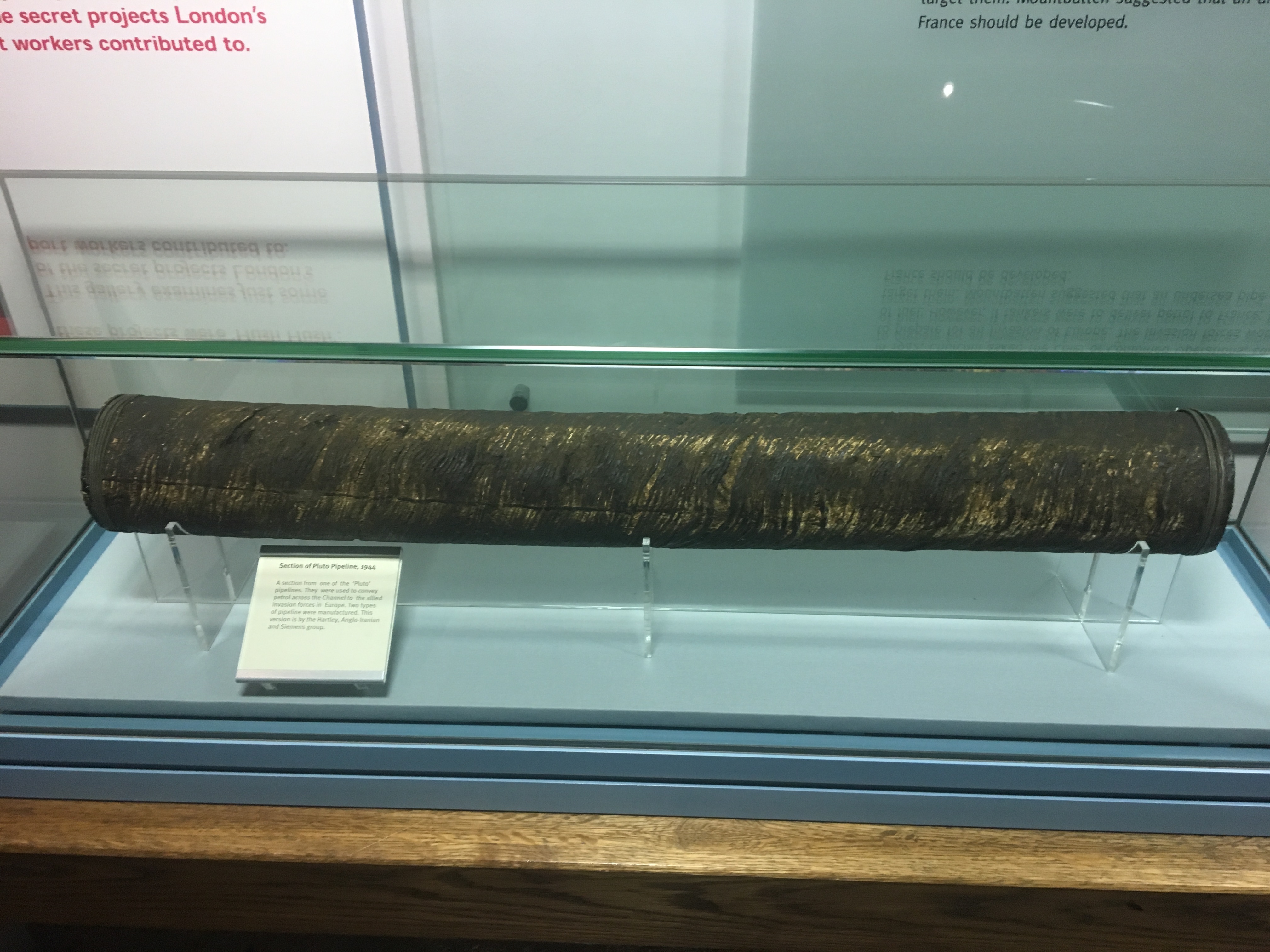Museum of London Docklands
From Londonhua WIKI
Museum of London Docklands
 Taken by Olivia Gibbs | |
| Main Entrance |
|---|
Overview
The Museum of London Docklands is on the Isle of Dogs and goes through the history of the London Docklands. They have exhibits on everything from slavery and sugar trade, to the war, and how the docklands took part to prepare for D-Day. The Museum of London Docklands is operated in partnership with the Museum of London and you can see similarities in the two museums.
Contents
- 1 Museum of London Docklands
- 2 Overview
- 3 References
- 4 External Links
- 5 Image Gallery
Ship Building
In order to allow ship building to become successful, the steam engine and iron had to be used. The first steam engine was built in 1814 by Maudslay and Field and fitted it on the Richmond.The steam engines were originally equipped to wooden ships and later were added to ships with sails as a way of providing auxiliary power. The introduction of these technologies was gradual. London continued to build large wooden ships well after the steam engine iron ship was introduced.
Sailor Life
On the second level of the museum, there is an exhibit that walks visitors through what life would have been like as a sailor. The ceilings are low and a salty sea air smells hangs in the exhibit. The whole exhibit is very dark, and the only exception is the candlelight that lights the streets and alleyways. Many pubs lined the streets for sailors to go to when they docked at the ports. It was typical sailor life for them to get drunk at the pubs when they dock. There was also a part of the walk through that had small wooden ships just sitting in the streets and the sounds of sailors lifting the small wooden ships and carrying them into the water. The floor was even made of cobblestone and the exhibit had sounds of horse drawn carriages walking through the streets. Sailor life at the docks was very interesting and lots of hard work, but the sailors were able to get it done.
The Greenland Dock
One of the many different docks in London, The Greenland Dock was London's second wet dock established between 1696-1699. It was created to refit ships, specifically East India ships, and not cargo similar to the Blackwall Yard Dock built in 1660. The dock is located at Rotherhithe and built originally as the Howland Great Dock. It was originally named after Elizabeth Howland, granddaughter of Sir Josiah Child, the dictatorial chairman of East India Company. And after she was married money was raised to build the dock and add a second dry dock on the Howland's Rotherhithe estate. It was originally used to refit East India ships but by 1720s Greenland whalers also used the dock which led to the construction of blubber boiling houses on the south side.
The South Sea Company financed 172 unprofitable whaling ships from the dock between 1725-1732. The company did so because of the import duty exemption and the fact Greenland 'right whale' had become prized for its oil rich blubber and whalebone. In this little gallery are two Narwhal tusks from the late 18th century. Narwhals are a part of the dolphin family and were considered lucky by whalemen since they signaled presence of Greenland whales. The narwhal tusks, such as the ones on display, are made of high quality ivory and made the whalemen refer to narwhals 'unicorns'. Also, narwhal blubber created a high grade oil. To find out more about the whaling history in London click here.
The Ratcliffe Fire of 1794 and the Tooley Street Fire of 1861
claimed
Execution Dock
Piracy has been a life long problem when shipping things oversea especially in the 18th century. Since piracy was a very large issue, concentrated efforts by the Royal Navy, Royal African Company, and the East India Company were in place to try to reduce the number of pirates by increasing the penalty of piracy. Those caught were brought to London for trial before the High Court of Admiralty and the conviction rate was high .This was to dissuade others thinking of turning to a life of crime from doing so. The punishment was a public execution at the "Execution Dock" where they would be publicly hanged.Their efforts helped reduce the number of pirates.
After being hung, pirates were then subjected to further humiliation. Their corpses were cut down, tired, and hung on a wooden gibbet in an iron cage. The rotting bodies in the giblet turtles were seen from the banks as a great terror to all people and prevented many from committing the same crime.
History
Capital punishment was the result of many cases, mostly mutiny and murders on the High Sea. Applicable crimes included sodomy and specific violations of the Articles of War. Those that were tried and found guilty were brought to the Execution Dock and paraded across the London Bridge. They were lead by the High Court Marshall, or his deputy, on horseback while carrying a silver oar. This oar represented the authority of the Admiralty. On the way to Wapping, a chaplain would attempt to convince the condemned to repent and confess their sins. Before arriving at the dock in front of crowds of people that awaited the prisoner, they were allowed to drink a pint of ale at a public house on the way. These executions were to be preformed by hangmen who worked in either Tyburn or Newgate Prison.
London Sugar & Slavery
Slavery
As London was growing as a center for finance and commerce from the 1700s onwards, they unfortunately ran into a popular crime against humanity. With everyone wanting wealth, tribal communities in West Africa were torn apart, tens of millions of people displaced and transported, and many were tortured and killed.
When this trend started, African People had not been new to the area, they arrived in Britain before the 1500s. By the late 1780s there were about 25,000 people of African Origin living in London. Most had liberated themselves living free and independently with London's poorer classes, but some where well-to-do members of the society.
The slave trade hurt many African societies and allowed European nations to impose European rule. This was an assault on African identities. Starting in the early 1600s, Londons merchants were importing increasing amounts of gold and ivory form Africa, but little was known about the people who lived there. As Africa became the main source for slaves for the new world of the Americas, ignorance led to racism, which turned into exploitation.
European nations had a well-organized system for supplying plantations with labor. Many African people resisted the trade, but others made money off of it. By the late 1600s the slave trade in London was organized by the Royal Africa Company. In 1750 the Company of Merchants trading to Africa took over. They brought people form the interior and sold them on the coast. The Africans who collaborated in the trade also had workers who painted the forts, and men to carry people and supplies from the shore onto the ship. As the trade became more and more profitable, a new African 'elite' status was reached, which contributed to the destructive divisions in the African Society.
Warehouse
As soon as you start the museum in the third floor, you are standing on the top floor of one of Lendon's oldest dock warehouses. A warehouse type of bunding designed for storing goods. When it was in use as a warehouse, this Space was often piled high with valuable cargoes. Men known as dock labourers later as "dockers unloaded ships worked on quaysides, and trucked sacks and barrels to warehouses. Cargoes were taken directly into warehouses from the quaysides or hoisted to their upper floors. Trolle s and barrows were used to move goods to their allotted warehouse storage positions, or 'stows. Most items coming into the warehouses had to be weighed and sampled. Customs and Excise Officers, dock managers and merchants all needed to know the quantity and quality of cargoes received. Everything was strictly controlled to guard against theft, fraud and cargoes being misplaced. With thanks to the Port of London Authority, whose archives have significantly enriched the content of this gallery. The roof and floors of the warehouse are supported by timber columns. In 1901, part of the interior of No. 1 Warehouse was destroyed by fire. The dock company wanted to replace the timbers and floors with reinforced concrete. However, as this would have cost more than the insurance, they used the original materials.
Measurement
Measuring the goods was an important job, and it was done constantly. Constant measurement occurred to calculate taxes and duties on shipments, check the cargo for merchants, create a reliable record of all received, stored, worked, and delivered shipments, and impose storage fees on merchants. The tools of measurement were typically beamscales, constantly tested for accuracy in an attempt to minimize the chance of fraud. The weights used in comparison were also frequently measured to ensure precise measurements. The people who check the measurements were the check clerks, who also monitored the involvement of warehouse workers in the measuring process.
WWII
Pluto
During the war several top secret projects were underway in the Docklands. One of these was code named 'Pluto' which stood for Pipe Line Under The Ocean. This operation was preparation for the Allied invasion of Europe later in the war. When the Allies did land in mainland Europe they would need a supply of fuel. As tankers carrying fuel would be targets for enemy aircraft an undersea pipe was to be built. Building a pipe underwater had several challenges, it had to resist rust, be flexible in rough seas, and survive the water pressure. The solution used was a telecommunications cable stripped of its copper core that provided exactly what was needed. By the end of the war 17 pipelines were eventually laid pumping 1.35 million gallons of petrol per day.
Tunnels
The Thames Tunnel
Peter will be writing about this
archeology
Katharine
References
If appropriate, add a references section
External Links
If appropriate, add an external links section
Image Gallery
If appropriate, add an image gallery
</nowiki>
